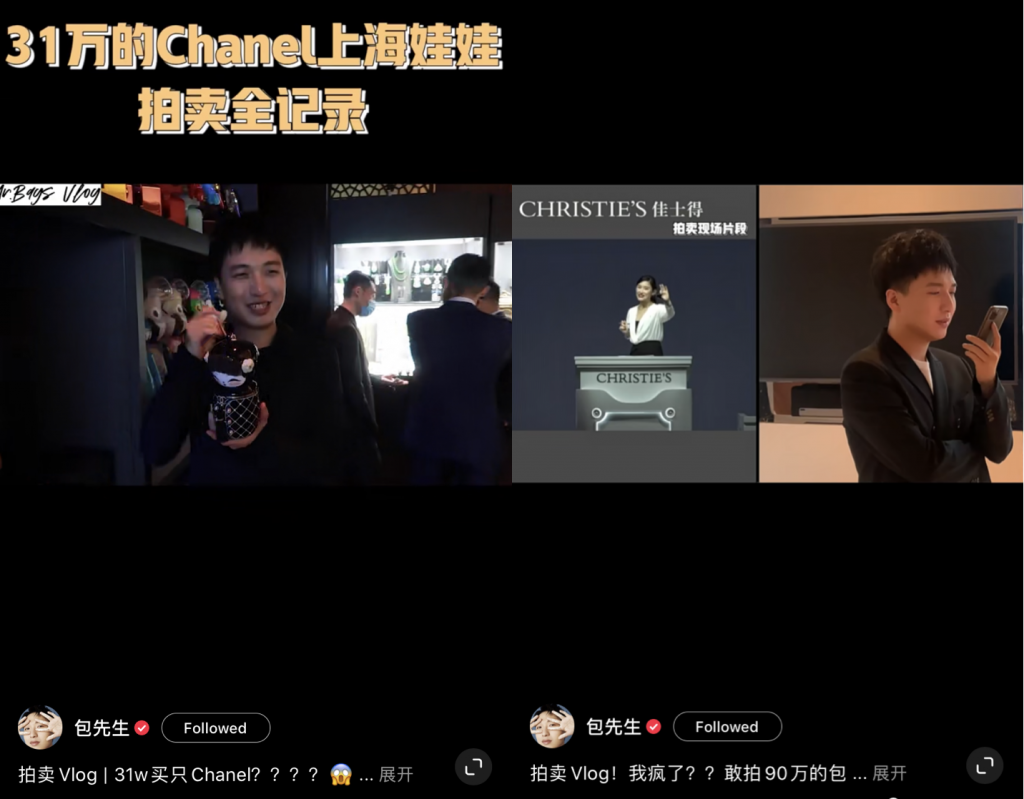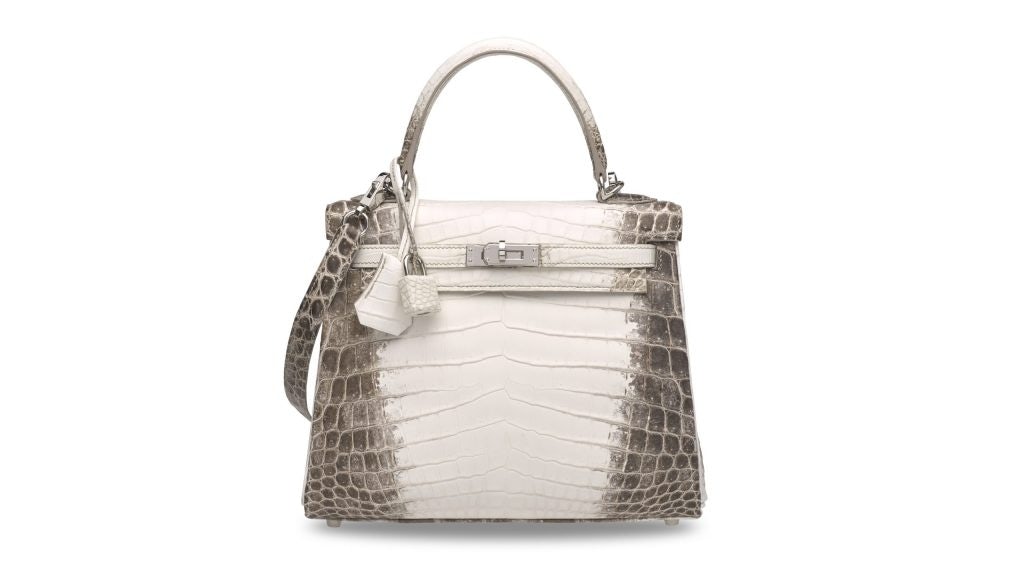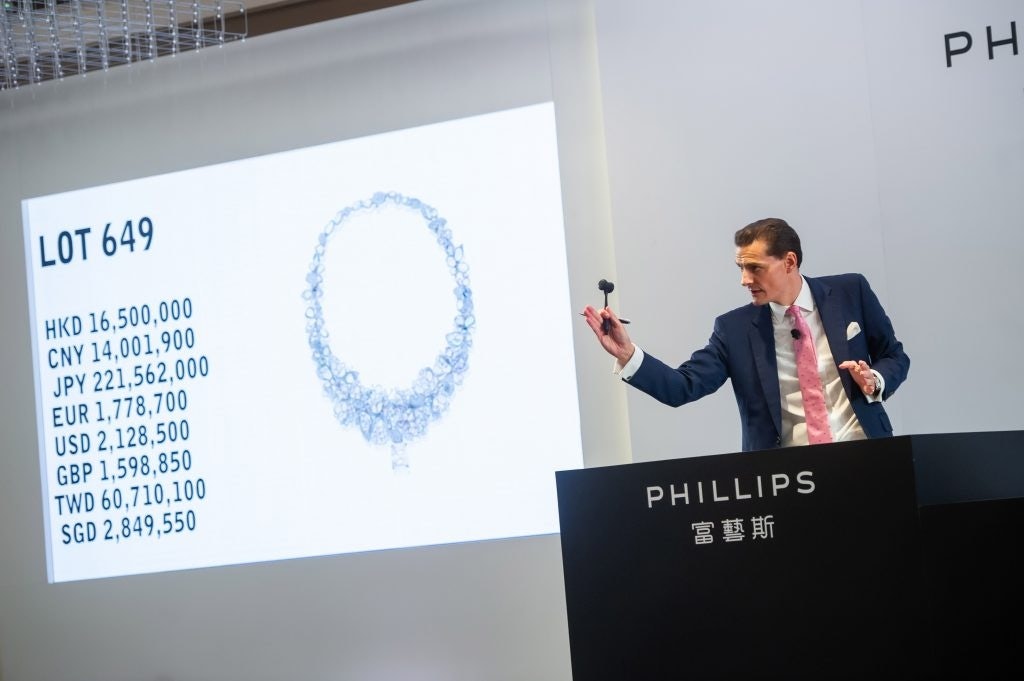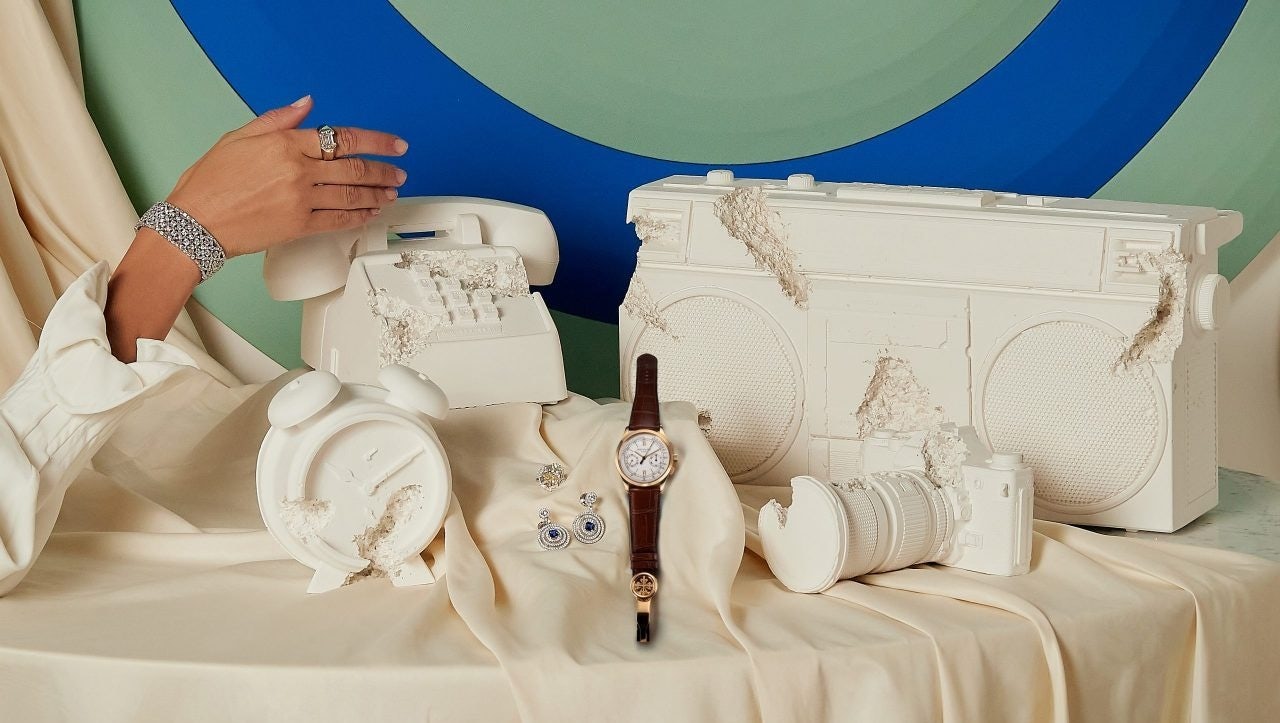Interested in learning more about this topic? Join Jing Daily and Sotheby’s on
Thursday, April 8 at 10am EST#
for our live webinar, How Popular Culture Has Redefined Luxury in China.
The discussion will be moderated by Enrique Menendez, Editor-in-Chief of Jing Daily, who will be joined by contemporary artist
Daniel Arsham#
, editor Ted Gushue, and Yuki Terase, Head of Contemporary Art, Sotheby’s Asia. Together, the panelists will explore the intersection between luxury and popular culture, look to the unique tastes of Chinese cultural consumers and how they have established a new utopia for luxury.
RSVP NOW#
EVENT PAGE#
Key Takeaways#
:
As entry points to auctions or other categories, luxury is a good way to lure new clients to enjoy the thrush of bidding.
When it comes to watches, Chinese buyers have a particular leaning toward modern styles from Patek Philippe and Rolex, as opposed to the vintage styles preferred by many European and U.S clients.
In luxury auctions, auction houses can help build emotional connections between luxury brands and consumers via meaningful and engaging storytelling.
What do Hermès handbags, Patek Philippe watches, Supreme skateboards, and Nike sneakers have in common? In the pandemic-ravaged year of 2020, they all became integral for online arms of auction houses — including Sotheby’s, Christie’s, and Phillips — that wanted to acquire new customers.
The ties between luxury and art auctions have always been strong. Christie's is owned by François-Henri Pinault, who also owns Kering. Meanwhile, Phillips has made a foray into watches and jewelry after LVMH president, Bernard Arnault, owned the auction house for a bit around the 2000s. And after having moved a lot of their bidding online, auctioneers have seen one audience that has continued to overlap both luxury and art since COVID-19 began: young and wealthy Chinese.
“The number of Chinese clients bidding online has tripled compared to 2019, growing faster than anywhere else in the world,” said Josh Pullan, the managing director of Sotheby’s global luxury division. He then added that the number of online luxury sales to Chinese buyers multiplied times twelve over the past year.
With China’s importance in the luxury market growing, there could be more opportunities in this area than in the past. Here, Jing Daily assesses the booming trend of luxury auctions and discusses how auctioneers should further engage with the market in 2021.
High-growth areas#
Luxury works as an entry point to auctions, luring new clients to enjoy the rush of bidding. And recent months have seen one of the most high-profile Chinese luxury consumers adopt the habit: top handbag and jewelry influencer Mr. Bags. Formally known as Tao Liang, the luxury-loving star started bidding on rare Chanel and Hermès bags and soon told his nine million social followers about it.
Last November, he posted a vlog of him experiencing a live auction for the first time. While eyeing a Chanel Shanghai doll clutch, he took his viewers through the full experience at Poly Auction: visiting the presale exhibition, taking the paddle, sitting while masked, competing with a phone bidder, and finally, winning the bid at 275,000 yuan ($42,560). “I’m so so excited!” He yelled to the camera once the auction hammer fell. A month later, another vlog showcased him bidding on three lots, each of rare Hermès handbags, at Christie’s. His bid for Hermès Birkin 45 in elephant gray won at HK$80,000 (around $10,300).

On the spectrum of luxury consumption, Chinese consumers have begun to move from conspicuous to post-consumerismover the last two decades, according to Dr. Kelly Meng Parnwell, the program director of luxury brand management at Goldsmiths, University of London. While recognizing the rise of Chinese luxury bidders, she told Jing Daily that “this is more of an evolutionary process than a revolutionary change.”
With 40,000-plus notes on Little Red Book, luxury auctions have become more accessible to those luxury lovers. And the rise of emerging initiatives like Sotheby’s Buy Now platform — which the company will roll out in Asia in later 2021, offering fixed-priced items such as modern, vintage, and memorabilia sneakers — should only further boost the market’s organic growth. Another example is the online and offline “luxury week” sale series that Christie’s has tailored for potential clients who like buying both luxury and art.

But auctioneers hope that new clients like Mr. Bags will eventually turn their eyes toward other categories. That’s because, despite market buzz over the growing number of auctions, luxury sales still only account for a small proportion of auction houses’ revenue. For instance, the critically acclaimed artist Chang Yu’s Sanyu was sold at Christie’s for over $22 million, 50 times more than the world-record handbag auction sale.
“The auction houses are scaling in terms of the number of auctions, but not yet money,” said Christine Bourron, chief executive of the art market research company Pi-eX, to the New York Times. The London-based company’s research showed that auction efforts in luxury have yet to make substantial contributions to earnings.
Leaning towards China#
Auction news rarely breaks into mainstream news, but the end of 2020 saw a slew of records set at luxury and streetwear fashion auctions in Asia. Late last November, Christie’s Hong Kong set a world auction record for a handbag when a Himalaya Hermès Kelly sold for $437,330 (HK$3,375,000). Sotheby’s and Christie’s said there was a lot of interest from Hong Kong and Mainland bidders for the game-worn Michael Jordan sneakers that broke world records at $560,000 and later at $615,000.

Aside from the crowd-pleasers where Chinese bidding interests align with the rest of the world, some auctioneers have noticed that China has particular preferences in certain categories. When asked if Chinese buyers prefer luxury auction items, Graeme Thompson, the worldwide head of jewelry at Phillips, said that “Burmese Rubies and Colombian emeralds are the most sought after by Chinese buyers. Also signed items by Houses such as Cartier, Van Cleef and Arpels, and Bvlgari, which accounted for over 40 percent of our Fall auction in Hong Kong.”

When it comes to watches, Chinese buyers have a particular taste for modern styles such as Patek Philippe and Rolex, unlike the vintage styles preferred by many European and US clients, as Jing Daily learned from Christie’s. Richard Mille and the independent watchmaker F.P. Journe are also in demand in Asia.
But demand has also grown in less traditional categories. Sotheby’s Pullan said that after the young Chinese collector Carson Guo had acquired the world’s only complete collection of Supreme skateboards in 2019, many young Chinese collectors started targeting emerging categories like sneakers, skateboards, and Hip Hop memorabilia.
“Sneaker and streetwear culture is a major force in China and Asia,” added Brahm Wachter, Sotheby’s director of e-commerce development. “We see that as a strong sign that the region will become a big player in the market in the future.”

To reach China’s wider audience, Christie’s tried to borrow luxury’s recent favorite strategy: working with KOLs for livestreams. Their collaboration with the Little Red Book KOL @linlinlinlu (30k followers) last November on the topic of the latter’s collection of Hermès and Louis Vuitton items drew hundreds of viewers, though a far cry from luxury brand’s tens of millions in social engagement for a single campaign.
According to Parnwell, auction houses should attempt to build special connections between consumers and luxury brands through storytelling. In 2019, the online Sotheby's sale featuring items from Berluti was a good example of this approach, she noted. Part of the dedicated marketing material explored the past of the iconic shoemaker Olga Berluti and how she made a pair of bespoke shoes for Andy Warhol.
“It isn’t just the brands that have an historical story to tell, the previous owner of an item may also add another layer to this story which makes the item more interesting, and potentially more valuable,” she said. “By narrating more meaningful, engaging stories, and fostering an emotional connection, auction houses can educate consumers about the history and provenance of their auction items.”
